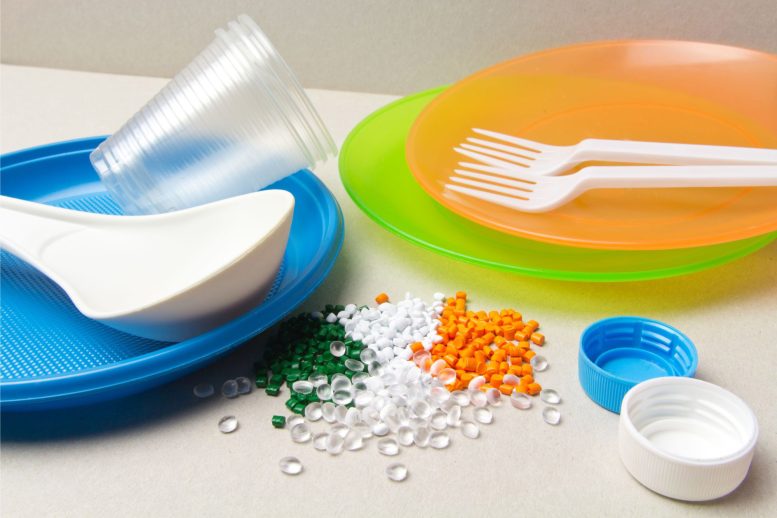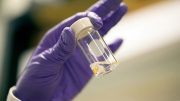
A study from Spain reveals that Bisphenol A (BPA) exposure impacts the gut microbiome of children differently, with normal-weight children showing greater bacterial diversity compared to those who are overweight or obese. This research underscores the importance of understanding BPA’s role in childhood obesity and the potential for future health interventions.
Bisphenol A (BPA), a synthetic chemical, is extensively utilized in creating long-lasting plastic items such as glasses, water bottles, and epoxy resins. However, it acts as an endocrine disruptor, disrupting the body’s natural hormone activities. Research indicates that significant exposure to BPA could harm human health in multiple aspects and potentially affect the gut microbiome.
But the connections aren’t clear. Researchers in Spain recently studied a group of over 100 children to identify microbes that play a role in BPA exposure and degradation, with the larger goal of understanding the complicated relationship between that process and childhood obesity. In their study, recently published mSystems, the researchers found more unique bacteria taxa in children of normal weight than in overweight or obese children.
The findings suggest that BPA exposure could promote different microbial communities in normal-weight children than those in children with obesity or who are overweight.
Research on BPA Exposure and Childhood Obesity
“We found that the gut microbial community responds differently to BPA exposure depending on the BMI (body-mass index) of the individual,” said microbiologist Margarita Aguilera, Ph.D., at the University of Granada in Spain. Aguilera is a senior author on the study. Those connections, she said, “underscore the intricate interplay between gut microbiota and potential human pathophysiology resulting from cumulative BPA exposure.”
Previous studies have investigated symptoms and effects associated with BPA exposure. Others have used mouse models and 16S rRNA gene sequencing, which can reveal microbes in complex mixtures of materials, like those from the gut or water. For the new study, the researchers, including Ana López-Moreno, Ph.D., who led the experimental work as part of her doctoral thesis, instead combined analyses of cultured samples with amplicon sequencing—an approach that, to their knowledge, hasn’t been used before.
The results came from a study of 106 children in Spain, roughly half boys and half girls, all between the ages of 5 and 10. They had participated in the OBEMIRISK project, an effort to understand the interplay between BPA and the gut microbiome sponsored by the European Food Safety Authority. Sixty of the children were normal weight; the rest were either overweight or obese. Fecal samples from the children were exposed to several levels of BPA and allowed to incubate for 3 days. Then, the researchers used 16s rRNA sequencing and amplicon sequencing, ultimately identifying 333 BPA-resistant bacterial species.
The Broader Impact and Awareness
Notably, species of Clostridium and Romboutsia found in the BPA-cultured samples promoted the richness of microbiota communities. Generally, Aguilera’s team noted, that normal-weight children hosted a more diverse, enriched, and structured network of bacteria than those found in the groups of overweight and obese children. Those results, she said, suggest that the gut microbiota in normal-weight children may be more resilient when exposed to xenobiotic substances like BPA.
Knowing which microbes participate in the complex network connecting BPA, obesity, and the gut microbiome, Aguilera said, could point to future interventions and policy changes that may reduce the risk of childhood obesity worldwide. In future work, she said the researchers plan to similarly investigate how exposure to other synthetic chemicals, including parabens and phthalates, may influence the composition of the gut microbiome. Her group’s overarching goal, however, is to elucidate the mechanisms behind an invisible but widespread threat.
“We want to raise awareness about the health risks associated with microplastics that enter our bodies, and those that circulate in the environment,” Aguilera said. “It’s crucial for individuals to be mindful of these concerns.”
Reference: “Bisphenol A exposure affects specific gut taxa and drives microbiota dynamics in childhood obesity” by Ana Lopez-Moreno, Klara Cerk, Lourdes Rodrigo, Antonio Suarez, Margarita Aguilera and Alicia Ruiz-Rodriguez, 1 March 2024, mSystems.
DOI: 10.1128/msystems.00957-23









Be the first to comment on "Common Plastic Chemical Linked to Increased Childhood Obesity Risks"